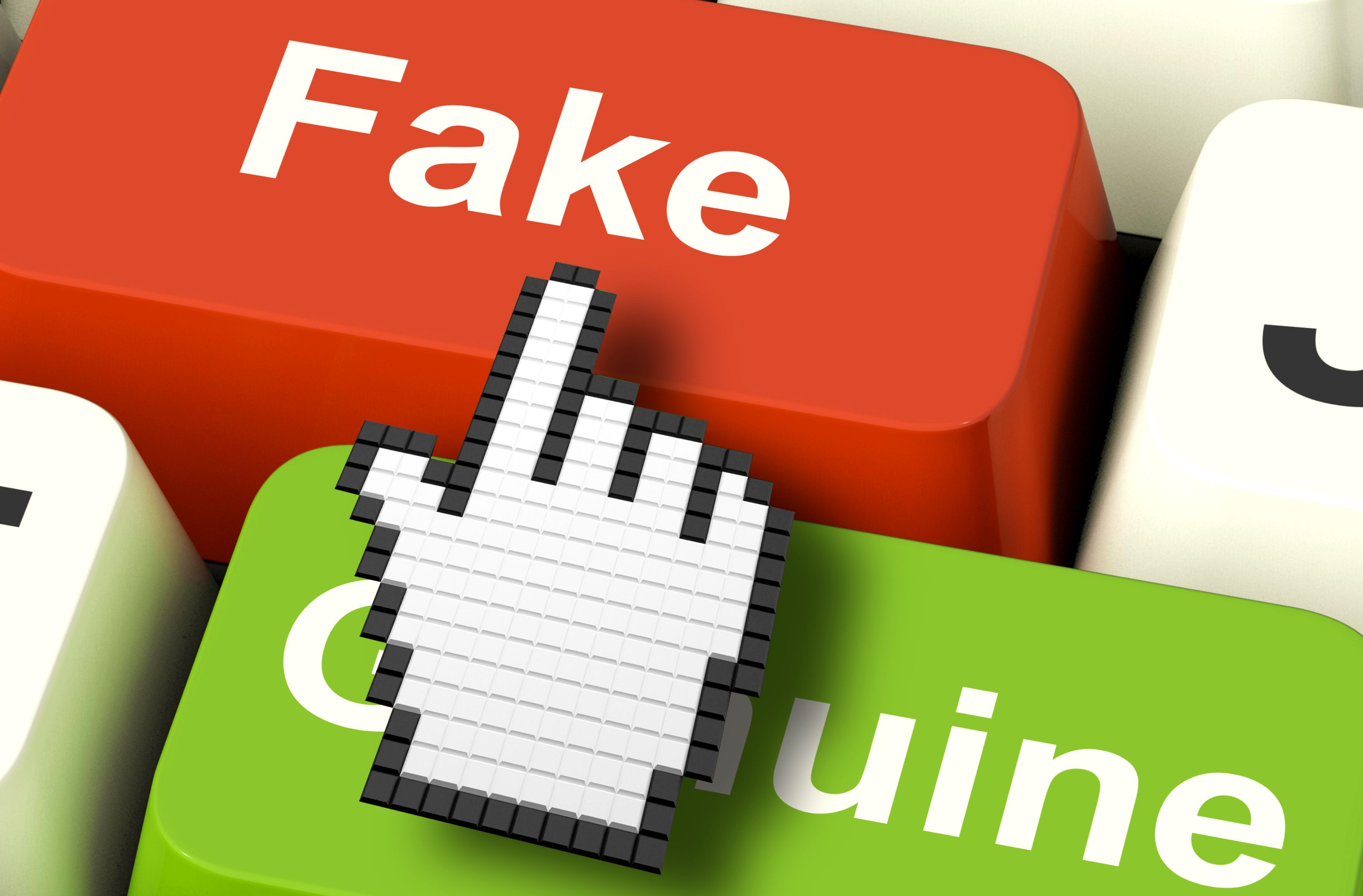By Eugene Kiely and Lori Robertson, FactCheck
Fake news is nothing new. But bogus stories can reach more people more quickly via social media than what good old-fashioned viral emails could accomplish in years past.
Concern about the phenomenon led Facebook and Google to announce that they’ll crack down on fake news sites, restricting their ability to garner ad revenue. Perhaps that could dissipate the amount of malarkey online, though news consumers themselves are the best defense against the spread of misinformation.
Not all of the misinformation being passed along online is complete fiction, though some of it is. Snopes.com has been exposing false viral claims since the mid 1990s, whether that’s fabricated messages, distortions containing bits of truth and everything in between. Founder David Mikkelson warned in a Nov. 17 article not to lump everything into the “fake news” category. “The fictions and fabrications that comprise fake news are but a subset of the larger bad news phenomenon, which also encompasses many forms of shoddy, unresearched, error-filled, and deliberately misleading reporting that do a disservice to everyone,” he wrote.
A lot of these viral claims aren’t “news” at all, but fiction, satire and efforts to fool readers into thinking they’re for real.
We’ve long encouraged readers to be skeptical of viral claims, and make good use of the delete key when a chain email hits their inboxes. In December 2007, we launched our Ask FactCheck feature, where we answer readers’ questions, the vast majority of which concern viral emails, social media memes and the like. Our first story was about a made-up email that claimed then-House Speaker Nancy Pelosi wanted to put a “windfall” tax on all stock profits of 100 percent and give the money to, the email claimed, “the 12 Million Illegal Immigrants and other unemployed minorities.” We called it “a malicious fabrication” — that’s “fake news” in today’s parlance.
In 2008, we tried to get readers to rid their inboxes of this kind of garbage. We described a list of red flags — we called them Key Characteristics of Bogusness — that were clear tip-offs that a chain email wasn’t legitimate. Among them: an anonymous author; excessive exclamation points, capital letters and misspellings; entreaties that “This is NOT a hoax!”; and links to sourcing that does not support or completely contradicts the claims being made.
Those all still hold true, but fake stories — as in, completely made-up “news” — has grown more sophisticated, often presented on a site designed to look (sort of) like a legitimate news organization. Still, we find it’s easy to figure out what’s real and what’s imaginary if you’re armed with some critical thinking and fact-checking tools of the trade.
Here’s our advice on how to spot a fake:
Consider the source. In recent months, we’ve fact-checked fake news from abcnews.com.co (not the actual URL for ABC News), WTOE 5 News (whose “about” page says it’s “a fantasy news website”), and the Boston Tribune (whose “contact us” page lists only a gmail address). Earlier this year, we debunked the claim that the Obamas were buying a vacation home in Dubai, a made-up missive that came from WhatDoesItMean.com, which describes itself as “One Of The Top Ranked Websites In The World for New World Order, Conspiracy Theories and Alternative News” and further says on its site that most of what it publishes is fiction.
Clearly, some of these sites do provide a “fantasy news” or satire warning, like WTOE 5, which published the bogus headline, “Pope Francis Shocks World, Endorses Donald Trump for President, Releases Statement.” Others aren’t so upfront, like the Boston Tribune, which doesn’t provide any information on its mission, staff members or physical location — further signs that maybe this site isn’t a legitimate news organization. The site, in fact, changed its name from Associated Media Coverage, after its work had been debunked by fact-checkingorganizations.
Snopes.com, which has been writing about viral claims and online rumors since the mid-1990s, maintains a list of known fake news websites, several of which have emerged in the past two years.
Read beyond the headline. If a provocative headline drew your attention, read a little further before you decide to pass along the shocking information. Even in legitimate news stories, the headline doesn’t always tell the whole story. But fake news, particularly efforts to be satirical, can include several revealing signs in the text. That abcnews.com.co story that we checked, headlined “Obama Signs Executive Order Banning The Pledge Of Allegiance In Schools Nationwide,” went on to quote “Fappy the Anti-Masturbation Dolphin.” We have to assume that the many readers who asked us whether this viral rumor was true hadn’t read the full story.
Check the author. Another tell-tale sign of a fake story is often the byline. The pledge of allegiance story on abcnews.com.co was supposedly written by “Jimmy Rustling.” Who is he? Well, his author page claims he is a “doctor” who won “fourteen Peabody awards and a handful of Pulitzer Prizes.” Pretty impressive, if true. But it’s not. No one by the name of “Rustling” has won a Pulitzer or Peabody award. The photo accompanying Rustling’s bio is also displayed on another bogus story on a different site, but this time under the byline “Darius Rubics.” The Dubai story was written by “Sorcha Faal, and as reported to her Western Subscribers.” The Pope Francis story has no byline at all.
What’s the support? Many times these bogus stories will cite official — or official-sounding — sources, but once you look into it, the source doesn’t back up the claim. For instance, the Boston Tribune site wrongly claimed that President Obama’s mother-in-law was going to get a lifetime government pension for having babysat her granddaughters in the White House, citing “the Civil Service Retirement Act” and providing a link. But the link to a government benefits website doesn’t support the claim at all.
The banning-the-pledge story cites the number of an actual executive order — you can look it up. It doesn’t have anything to do with the Pledge of Allegiance.
Another viral claim we checked a year ago was a graphic purporting to show crime statistics on the percentage of whites killed by blacks and other murder statistics by race. Then-presidential candidate Donald Trump retweeted it, telling Fox News commentator Bill O’Reilly that it came “from sources that are very credible.” But almost every figure in the image was wrong — FBI crime data is publicly available — and the supposed source given for the data, “Crime Statistics Bureau – San Francisco,” doesn’t exist.
Recently, we’ve received several questions about a fake news story on the admittedly satirical site Nevada County Scooper, which wrote that Vice President-elect Mike Pence, in a “surprise announcement,” credited gay conversion therapy for saving his marriage. Clearly such a “surprise announcement” would garner media coverage beyond a website you’ve never heard of. In fact, if you Google this, the first link that comes up is a Snopes.com article revealing that this is fake news.
Check the date. Some false stories aren’t completely fake, but rather distortions of real events. These mendacious claims can take a legitimate news story and twist what it says — or even claim that something that happened long ago is related to current events.
Since Trump was elected president, we’ve received many inquiries from readers wanting to know whether Ford had moved car production from Mexico to Ohio, because of Trump’s election. Readers cited various blog items that quoted from and linked to a CNN Money article titled “Ford shifts truck production from Mexico to Ohio.” But that story is from August 2015, clearly not evidence of Ford making any move due to the outcome of the election. (A reminder again to check the support for these claims.)
One deceptive website didn’t credit CNN, but instead took CNN’s 2015 story and slapped a new headline and publication date on it, claiming, “Since Donald Trump Won The Presidency… Ford Shifts Truck Production From Mexico To Ohio.” Not only is that a bogus headline, but the deception involves copyright infringement.
If this Ford story sounds familiar, that’s because the CNN article has been distorted before.
In October 2015, Trump wrongly boasted that Ford had changed its plans to build new plants in Mexico, and instead would build a plant in Ohio. Trump took credit for Ford’s alleged change of heart and tweeted a link to a story on a blog called Prntly.com, which cited the CNN Money story. But Ford hadn’t changed its plans at all, and Trump deserved no credit.
In fact, the CNN article was about the transfer of some pickup assembly work from Mexico to Ohio, a move that was announced by Ford in March 2014. The plans for new plants in Mexico were still on, Ford said. “Ford has not spoken with Mr. Trump, nor have we made any changes to our plans,” Ford said in a statement.
Is this some kind of joke? Remember, there is such thing as satire. Normally, it’s clearly labeled as such, and sometimes it’s even funny. Andy Borowitz has been writing a satirical news column, the Borowitz Report, since 2001, and it has appeared in the New Yorker since 2012. But not everyone gets the jokes. We’ve fielded several questions on whether Borowitz’s work is true.
Among the headlines our readers have flagged: “Putin Appears with Trump in Flurry of Swing-State Rallies” and “Trump Threatens to Skip Remaining Debates If Hillary Is There.” When we told readers these were satirical columns, some indicated that they suspected the details were far-fetched but wanted to be sure.
And then there’s the more debatable forms of satire, designed to pull one over on the reader. That “Fappy the Anti-Masturbation Dolphin” story? That’s the work of online hoaxer Paul Horner, whose “greatest coup,” as described by the Washington Post in 2014, was when Fox News mentioned, as fact, a fake piece titled, “Obama uses own money to open Muslim museum amid government shutdown.” Horner told the Post after the election that he was concerned his hoaxes aimed at Trump supporters may have helped the campaign.
The posts by Horner and others — whether termed satire or simply “fake news” — are designed to encourage clicks, and generate money for the creator through ad revenue. Horner told the Washington Post he makes a living off his posts. Asked why his material gets so many views, Horner responded, “They just keep passing stuff around. Nobody fact-checks anything anymore.”
Check your biases. We know this is difficult. Confirmation bias leads people to put more stock in information that confirms their beliefs and discount information that doesn’t. But the next time you’re automatically appalled at some Facebook post concerning, say, a politician you oppose, take a moment to check it out.
Try this simple test: What other stories have been posted to the “news” website that is the source of the story that just popped up in your Facebook feed? You may be predisposed to believe that Obama bought a house in Dubai, but how about a story on the same site that carries this headline: “Antarctica ‘Guardians’ Retaliate Against America With Massive New Zealand Earthquake.” That, too, was written by the prolific “Sorcha Faal, and as reported to her Western Subscribers.”
We’re encouraged by some of the responses we get from readers, who — like the ones uncertain of Borowitz’s columns — express doubt in the outrageous, and just want to be sure their skepticism is justified. But we are equally discouraged when we see debunked claims gain new life.
We’ve seen the resurgence of a fake quote from Donald Trump since the election — a viral image that circulated last year claims Trump told People magazine in 1998: “If I were to run, I’d run as a Republican. They’re the dumbest group of voters in the country. They believe anything on Fox News. I could lie and they’d still eat it up. I bet my numbers would be terrific.” We found no such quote in People‘s archives from 1998, or any other year. And a public relations representative for the magazine confirmed that. People‘s Julie Farin told us in an email last year: “We combed through every Trump story in our archive. We couldn’t find anything remotely like this quote –and no interview at all in 1998.”
Comedian Amy Schumer may have contributed to the revival of this fake meme. She put it on Instagram, adding at the end of a lengthy message, “Yes this quote is fake but it doesn’t matter.”
Consult the experts. We know you’re busy, and some of this debunking takes time. But we get paid to do this kind of work. Between FactCheck.org, Snopes.com, the Washington Post Fact Checker and PolitiFact.com, it’s likely at least one has already fact-checked the latest viral claim to pop up in your news feed.
FactCheck.org was among a network of independent fact-checkers who signed an open letter to Facebook’s Mark Zuckerberg suggesting that Facebook “start an open conversation on the principles that could underpin a more accurate news ecosystem on its News Feed.” We hope that conversation happens, but news readers themselves remain the first line of defense against fake news.
By Eugene Kiely and Lori Robertson, FactCheck





